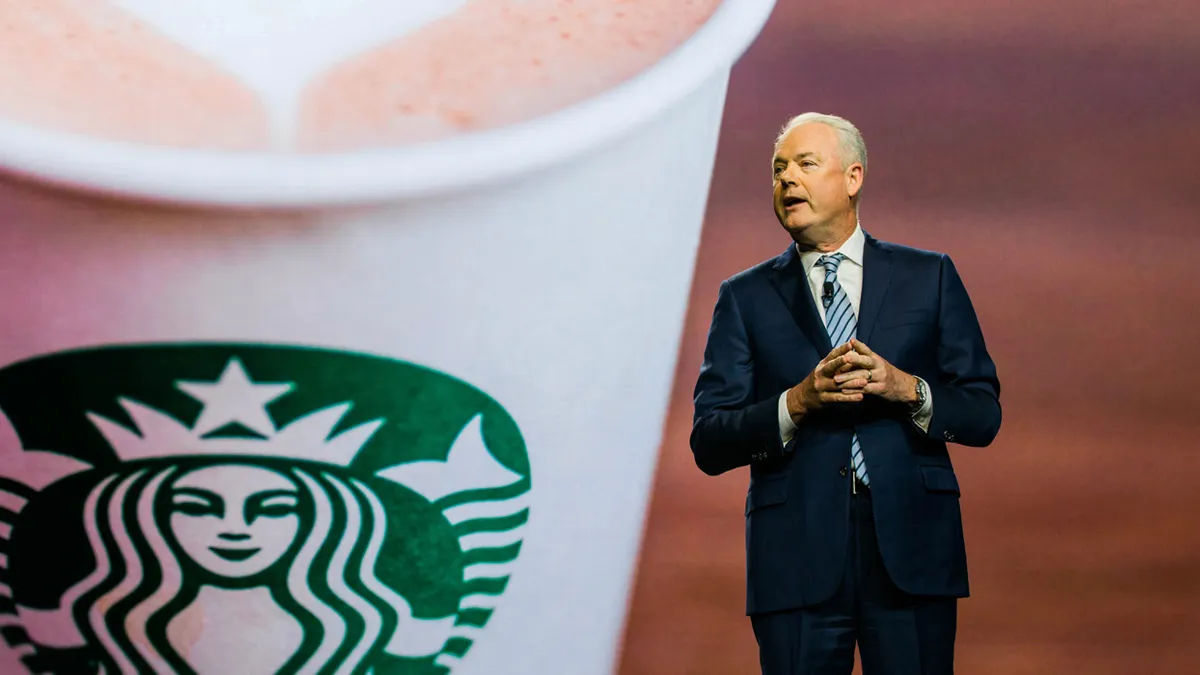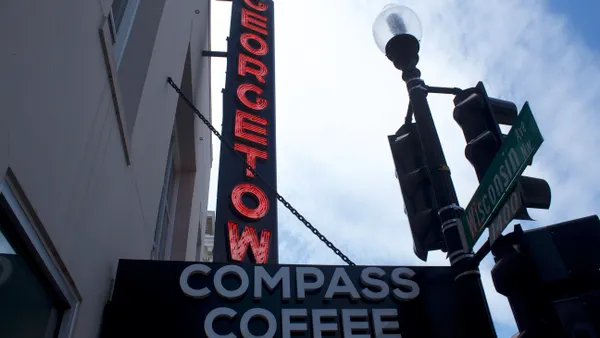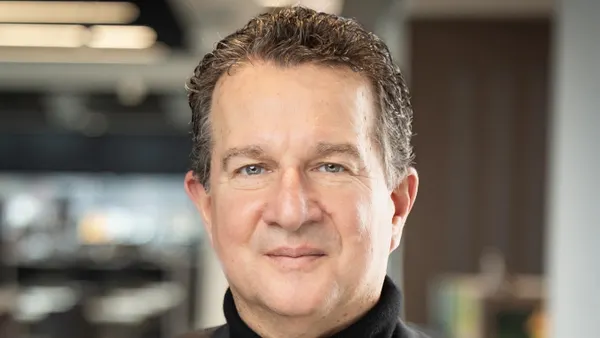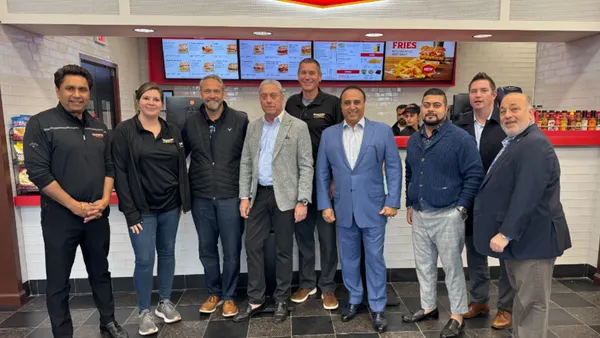When Kevin Johnson took the helm of Starbucks in 2017, longtime CEO Howard Schultz’s shadow still loomed large over the company. The future of the coffee behemoth was also uncertain, with new competitor threats growing in China and U.S. sales flattening.
Investors questioned Johnson's leadership abilities, Morningstar Consumer Equity Strategist R.J. Hottovy told Restaurant Dive, but he quickly diagnosed the company's pain points across markets — beginning a streak of innovation that has buoyed Starbucks sales into 2019. When Johnson became chief in April 2017, the chain reported U.S. revenue growth of 7% to $3.4 million in Q2 2017 and global net revenue rose 6% to $5.3 billion for the period. Comparatively, in Q4 of this year, Starbucks raked in $4.2 million in domestic revenue and a whopping $6.7 billion in global revenue.
Tech investments are driving growth
Johnson, who served as CEO of networking and cybersecurity solutions conglomerate Juniper Networks from 2008 to 2014, has leveraged his engineering background to maximize Starbucks' technology and better cater to consumer demand for off-premise and to-go orders.
"I leverage data to help inform decisions, but I also believe in a distributed leadership model," Johnson told the Harvard Business Journal this fall. "Serving over a hundred million customers per week, a distributed leadership model with clear accountability, leveraging analytics and data to help inform the decisions we make, it's been working for us."
Earlier this summer, he oversaw Starbucks’ partnership with Brightloom, which will license software from the coffee company's mobile and loyalty technology and integrate it with its own digital innovations. Brightloom will help Starbucks scale the platform to global license partners around the world to improve personalization, payment, loyalty and customer relationship management.
By tapping into this technology firm, Starbucks gains a first-mover advantage that it can scale across markets, a move that Hottovy believes could protect its place at the front of the pack.
"I would put Starbucks in the upper echelon of restaurant providers that are embracing technology."

R.J. Hottovy
Consumer equity strategist, Morningstar
In September, Johnson told BNN Bloomberg that Starbucks is reinvisioning its store formats to drive growth, and is considering virtual kitchens in America following Starbucks China's ghost restaurant test with Alibaba.
"We're learning from their experience to understand how we might bring a similar model to life in the U.S., particularly in large metro markets like New York," Starbucks CFO Patrick Grismer said during Pipe Jaffray's 39th annual Consumer Marketplace Conference this summer.
While this tactic is meant to fend off Luckin's strategy in China, it could also vault Starbucks ahead of rival coffee chains like Dunkin', Peets and La Colombe by offering competitive convenience.
An AI-driven future
But Johnson hasn't let technology acceleration undermine the brand's identity as an experience-focused "third-place" in American culture.
"I would put Starbucks in the upper echelon of restaurant providers that are embracing technology… but also understand how it cannot just facilitate transactions but also elevate the brand," Hottovy said. "There is so much opportunity with the delivery-only stores to figure out what those locations need to satisfy the consumers [who] are going there."
Going forward, Johnson will lead Starbucks on its Deep Brew project, an initiative that leverages machine learning to personalize offers diners access on their mobile phones and digital menu boards at the drive-thru.
"We're now also using machine learning to schedule coffee machine maintenance, track dairy in store refrigerators, and manage inventory and shipping," Johnson told HBJ. "All the things that we’re automating are freeing up our partners in the store to spend more time with customers. That is a key part of our business strategy."




 Read more
Read more







